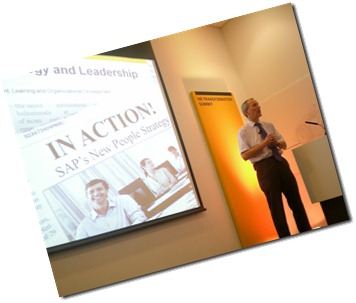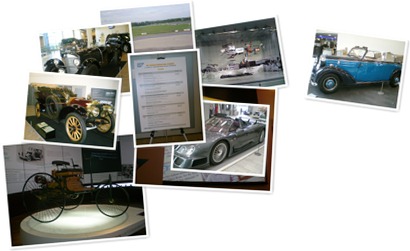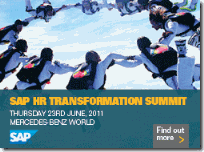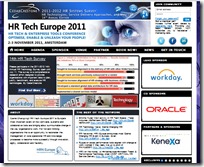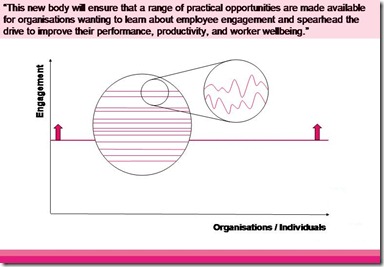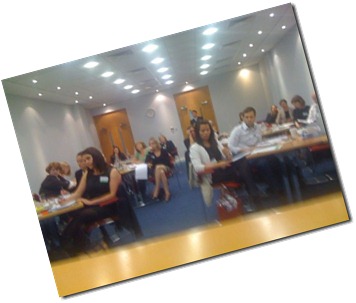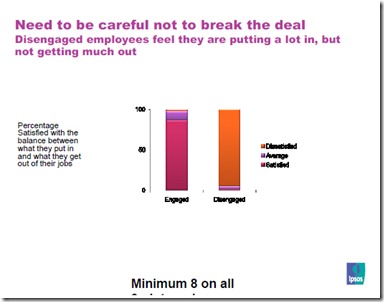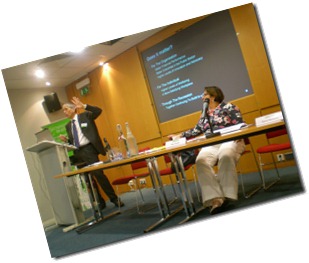 I presented on the opportunities of using social media (and in focusing on social outcomes) at the SAP HR Summit at the end of last week.
I presented on the opportunities of using social media (and in focusing on social outcomes) at the SAP HR Summit at the end of last week.

The session went well and got lots of interest, though only in the room as nobody, other than SAP themselves, were using Twitter.
So this reinforced the point I made last week too, that despite the talk, there’s still very little walk going on in this area. But the day also reinforced that there is a LOT of talk. In fact social media, and the associated need for conversation and connectedness, came out as a strong theme, if not the main theme, in, I think, every session during the day.
For example, in one panel, David Ludlow, VP HR On-Demand Solutions for SAP described how the company is looking carefully at how social media is going to be used. This is involving talking to end users, identifying the problems and the solutions they are trying to achieve in order to better understand how social software can help get them from A to B. SAP is clear that in the future a lot more business applications are going to offer the same type of user experience and incorporate the concepts of gaming, Linkedin and Facebook etc. Then after the panel, Olivier Dubuisson, UK SAP Technology Delivery Unit Manager for NorthgateArinso noted that people shouldn’t see social media as the future as it’s already here today.
And in my panel on Cultivating Creative Leaders, Eric Brunelle, Chief HR Solutions Architect for SAP; Kim Fischer, Director People Solutions and Technology for EPI-USE and I all talked extensively about social recruiting. Meanwhile, Jim Davis, Director of HR Business Processes at Firmenich talked about the benefits of a community focus there. I’ve listed all of this to emphasise how much focus and positivity there had been on the use of social media. This made the jump to the next session but one, delivered by Christopher Middleton, Employment Partner in Kemp Little’s HR Practice appear particularly stark.
Middleton kicked off by noting (as above) that social media has introduced a significant shift into the employer / employee relationship. The issue for him is that employers, and courts, haven’t yet caught up. So 54% of employers are restraining use of the internet, but the proportion should probably be higher than this...

The main issues in the (UK) legislation are:
Liability for what employees say / do
Issues include discrimination and harassment – eg if someone makes inappropriate comments on Facebook – if done in the workplace, or about a relationships which only exists because of work, an employer is likely to be liable. A complete ban is unlikely to be enforceable as social media is how many people live their lives, and they can always just turn to their smart phones anyway. A partial ban may be possible. The key is to have clear guidelines which keep limitations in proportion.
Taking action against employees for inappropriate use of social media
Actions based on excessive or inappropriate use of the internet, or which cause damage to an employer’s reputation also need to be proportionate. For example, dismissals for small offences when someone has had 30 years service, or for posting a video which has only received 8 hits is likely to be perceived as unfair. Privacy is also important – something that an employee has ben doing in private, and depending on their privacy settings in any social media site they’ve been using for this, may not provide a fair basis for dismissal either.
Monitoring employees’ use of the internet etc
Monitoring also needs to be proportionate eg videoing someone at home is likely to strengthen constructive dismissal cases. Good point but none of Middleton’s examples were actually about social media – I’d have preferred examples relating to organisation’s use of the various monitoring tools to track their employees’ use of social media sites – perhaps out of work as well. Perhaps it’s too early days for these?
Use of on-line information for recruitment
Middleton presented research conducted by Microsoft in 2009 (a century ago in social media land) to conclude that there is a strong case against collecting information in a recruitment context.

Keeping social data out of recruitment seems to be the main viewpoint in HR, eg in the CIPD’s guidelines, though it isn’t in workshops I do on social media with HR practitioners, and doesn’t seem to be actual practice (or at least it wasn’t back in 2009) either.
I’m still not convinced personally. OK, turning someone down for photos of them drinking heavily which turn out to be 5 years old (Middleton’s example) is pretty dumb. But this is about use of the tool, not the features of the tool. My mind goes back to a Russian Sales Director I employed who we should never have recruited. I’m sure that a quick check of the social media (if it had been available then) would have avoided an expensive hiring mistake (mind you, so would have just a few visits to NightFlight!). My advice is to check people out on social media, and then to take sensible decisions about using the information you find out. And if you can’t trust your line managers, then just do this in HR / Recruitment (but also think about why you don’t trust your managers!). You may also want to think about whether you want to recruit someone who isn’t using social media, and what this means for their relationship capital!
In fact that’s sort of my reaction to this whole session too. Yes, social media can raise problems in employment and recruiting. Yes, we need to manage use of these tools. But to then infer this means that organisations should limit use to these tools is just a jump too far.
And the soiled underwear?
Well, I so was concerned about how all this doom and gloom at the end of day would counter the positive messages in all the other sessions that I felt I had to do something to rebalance it.
So my final comment of the day was a quick appeal not to put social media in the same category as soiled underwear (I was probably thinking about Donna Miller’s quote about the bedroom drawers again).
I reminded people about the Polite – Police – Partner – Player model that Eric Brunelle had referred to. Policing is important, but this isn’t what we want to be known for! Restricting access to social media isn’t what we want to be doing either.
Photo credit: Anthony Hesketh (thanks!)
Technorati Tags:
SAP,
David Ludlow,
HR,
On-Demand Solutions,
Olivier Dubuisson,
NorthgateArinso,
Eric Brunelle,
Solutions Architect,
Kim Fischer,
EPI-USE,
Jim Davis,
HR Business Processes,
Firmenich,
Christopher Middleton,
Employment Partner,
Kemp Little,
social media
- Consulting - Research - Speaking - Training - Writing
- Strategy - Talent - Engagement - Change and OD
- Contact me to create more value for your business
- jon [dot] ingham [at] strategic [dash] hcm [dot] com
.
 I was fascinated by this debate taking place at the Economist recently – are we in a new tech (social media) bubble?
I was fascinated by this debate taking place at the Economist recently – are we in a new tech (social media) bubble?




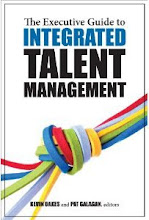



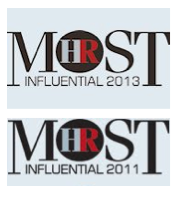








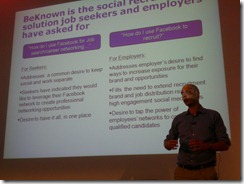
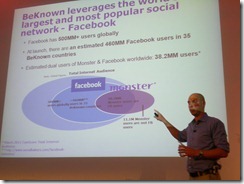

 This post is really just an opportunity for some nice pictures of PepsiCo’s / TopBananas mobile recruiting app.
This post is really just an opportunity for some nice pictures of PepsiCo’s / TopBananas mobile recruiting app.
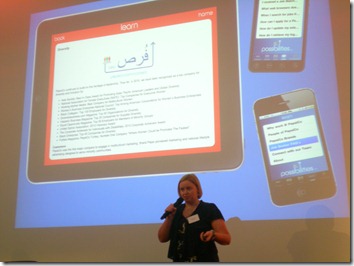
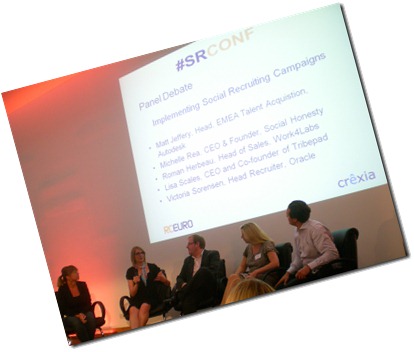
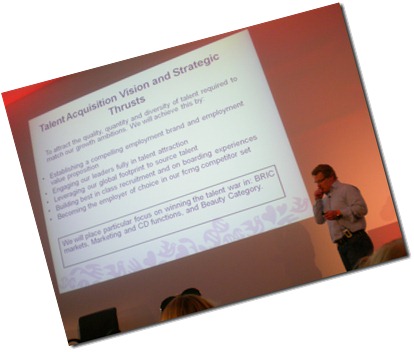
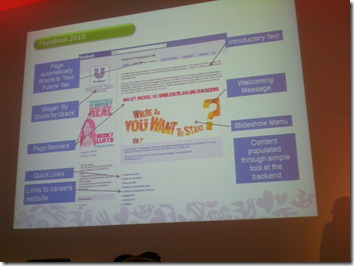
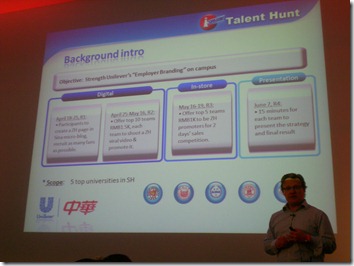

 I presented on the opportunities of using social media (and in focusing on social outcomes) at the
I presented on the opportunities of using social media (and in focusing on social outcomes) at the 


